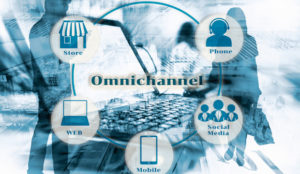Digital transformation means a lot of things to different people, but if you do it right it should be virtually unique to your circumstance. The other day I caught up with Rip Gerber, CMO at Vlocity, the Salesforce partner that specializes in vertical industries like telecommunications and insurance, among others. Of digital disruption, Gerber told me, “Nobody changes anything without a strong business case,” and he’s right of course. Vlocity is a company focused on disruption.
It’s the business case that drives the circumstance which, in turn, drives uniqueness. Despite all this uniqueness, however, at a technology level you can come up with three specific business scenarios in which business cases drive a technology pathway. Not surprisingly, it’s the technology platform that determines the success of the transformation effort, and a platform that can roll forward into increasingly intricate parts of transformation is essential.
There are a few platforms in the market that support this kind of agility — from companies like Salesforce, Oracle and Microsoft — and that’s one big reason I see that the IT industry is reducing to an oligopoly. Companies not named Salesforce, Oracle and Microsoft are not in danger of going away, but they face strong business cases for alignment with these larger vendors.
Back to the three approaches. They are 1) transforming the engagement layer, 2) transforming business processes, and 3) greenfield development or renewal.
Transforming the Engagement Layer
In this scenario, much stays the same. All the legacy systems, including their connections, remain intact. What changes is the user interface, and for many businesses that’s enough.
However, in the first decade of this century, we saw a similar approach as businesses recommissioned old client-server apps after giving them facelifts complete with browser interfaces. That was fine as far as it went, but some businesses assumed they could turn those largely internal systems to the public because, hey, they were browser-based. What could be easier? That worked about as well as a parachute without a ripcord.
I see this approach to transformation being employed usefully in healthcare — not so much in the insurance end of the business, though it’s there too, but in care delivery. For a very long time, healthcare’s back end has had loads of systems of record. For instance, the diagnostic systems in the pathology labs, radiology and other departments fit this description.
Systems of record were fine when the primary consumers of the data were doctors who could interpret it. However, as nurses, physician assistants and others take on more of the healthcare delivery load, it makes sense to build some expertise into the engagement layer to add accuracy and precision.
A good example might be in ordering follow-up tests. Back when only a doctor saw your blood tests, he or she might order additional testing to determine the cause of, say, borderline anemia before having you back for another appointment. That was less than ideal, because it delayed service and required an additional encounter.
An experienced doc might have ordered additional testing right away but could have been thwarted by insurance systems rooting out waste. An expert system in the engagement layer now might order additional testing reflexively to determine if the anemia was caused by low iron levels or low vitamins B12 and B6, and the insurance expert systems might not care.
You can’t program that. There are too many moving parts that need to be coordinated at the platform layer. You can find examples like this in banking; insurance; and services provisioning, like in the cellphone industry. The last looks a bit like common CPQ but written in a foreign language.
Often, simply changing the engagement layer isn’t enough. As soon as you put the customer in the middle of everything, you begin altering processes and inventing new ones, along with the ways legacy systems support them (or don’t). That’s for the next level.
Transforming Business Processes
A process-centric transformation has a lot of advantages, but it can be costly and time-consuming. Think of adding another level to your ranch house. It happens all the time, but the process is not for the faint of heart especially if you live there, or need to continue running the business.
Implied in a process-centric transformation is the notion of turning your business to face the customer — as opposed to, say, your supply chain and manufacturing effort. It’s not that those other things aren’t important. It’s just that the customer is more important than the purchase order and invoice today. If you add subscription services, your old systems will be swamped.
So, as your business is adding a new level, it’s maybe keeping the kitchen but adding a stairwell and an upstairs bath. Even though you’re keeping the downstairs as is, you’ll still be opening walls to run more pipes and wires. In a business, that means streamlining your processes and simplifying your technology — and most likely adding and deleting some technology as well.
In practical terms, you’ll be adding and losing processes that enable you to get closer to customers. In banking, that might mean going from administering a customer with a checking account to dealing with a household and its needs for savings, checking, revolving credit, retirement and possibly insurance. Each of those topics requires multiple processes that still access the same, or an expanded data set and way more failsafes to keep everything in line.
Greenfield Development
There’s a point in Clay Christenson’s book, The Innovator’s Dilemma, where he mentions the lifeboat strategy. Simply put, in this approach you build a new house. Maybe you don’t demolish the old one and rebuild on top of it, but it’s close.
In a lifeboat strategy, a business decides to launch a new brand or do something so different that it can’t simply construct a new edifice around its customers. Instead, it must leave everything in place and move customers one by one.
Some customers won’t move, because for them there’s no advantage, so a vendor might support two very different businesses for a time. It makes me think about a bank lobby in the age of ATMs.
Cellphone companies seem to be doing this right now as they move to new 5G services. It also seems to be a strategy that Oracle has embraced as it moves its customer base to the cloud, though Oracle is working several strategies at once. Some look greenfield and some look more like moving existing systems to cloud infrastructure. It’s all about circumstance.
My Two Bits
Your digital disruption will look more or less like one of these scenarios, but you won’t know which until you do some detailed analysis of your needs and goals. For instance, it’s not enough to say you want to increase revenue — who doesn’t?
You’ll also need a plan. Perhaps you’ll open an e-commerce capability. At that point, you’ll be thinking about deploying an online store and linking it into your accounting system, product catalog, and several other things. There will be lots of automated business processes, chatbots, and analytics issues to consider, too.
On the other hand, you might decide to enter the subscription fray. To do that, you’ll need some of the above, but also a billing system that enables you to charge by time periods, and a CPQ system that understands how to do that.
In both scenarios, the way you market and service customers will need updating as well — but there will be differences in your approaches that will determine your systems of engagement.
It’s becoming apparent that we’re deep into CRM 2.0 or possibly 3.0, depending on how you measure your earlier involvement. This is also a good time to be thinking about future technology, because many competitors in various markets will be making the same moves.
You really don’t want to be late to this game, because you’ll get table scraps. The great news right now is that the technology you need to change your business is largely available and proven — but remember, it starts with some analysis and a plan.















































